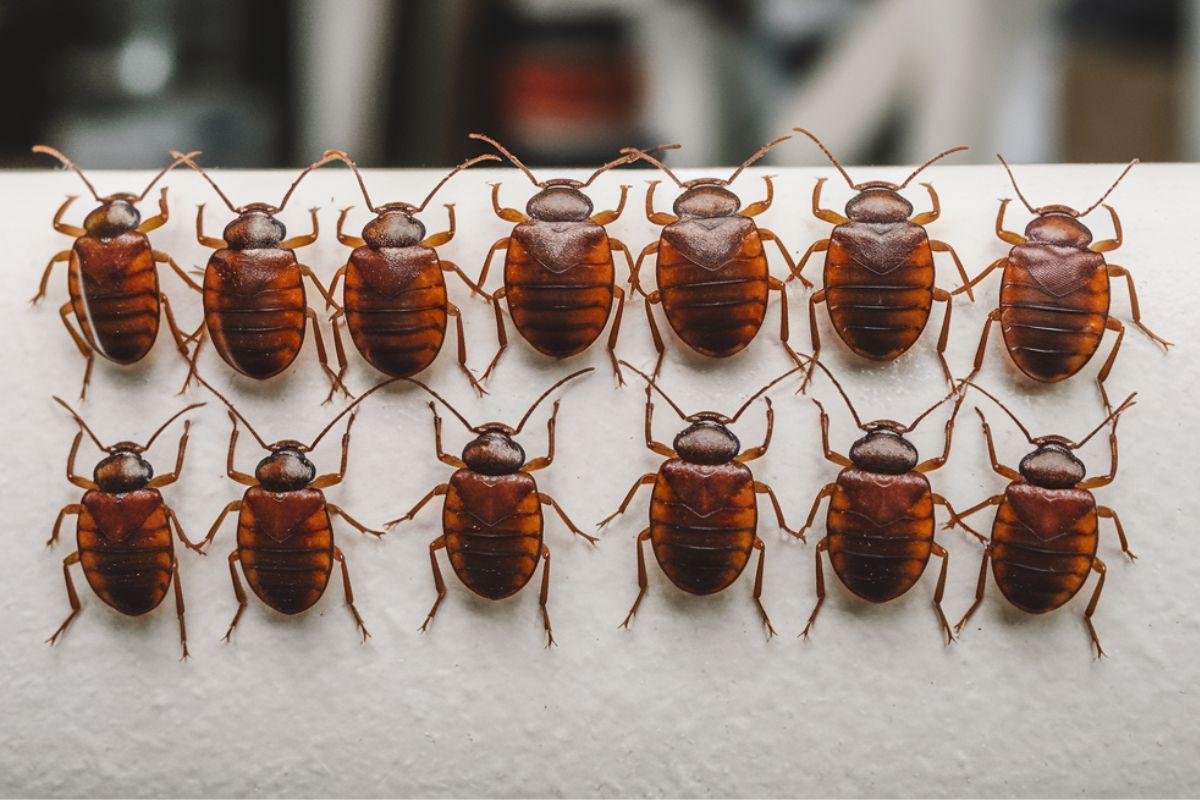Bed bugs are tiny, reddish-brown bugs. They come out to feed on people’s blood at night. They hide within cracks, mattresses, and other furniture. Their bites make your skin scratchy and uncomfortable.
Think you’ve got a bedbug? Think again! 11 bugs look like bed bugs! Knowing the difference could be between a good night’s sleep and sleepless nights spent worrying about unwanted little critters. Cheers to sneaky look-alikes and to staying safe from them!
Bed bugs are feared by many for their bites, but other bugs look almost identical. These bugs are tough to identify and may even confuse. Some might even hide in your home just like bed bugs do. Knowing how to spot these look-alikes can help you protect your space. Let’s take a closer look at 11 bugs that closely resemble bed bugs.
What Do Bed Bugs Look Like?
Bed bugs are small, flat insects that have a reddish-brown color, usually the size of an apple seed. They have oval bodies that are not easily noticeable unless they are feeding. After feeding, they become swollen and darker in color. Their small size and flat shape help them hide easily in cracks and crevices.
These bugs are seen only during nighttime, that is, in dark, sheltered crevices inside mattresses or furniture. A bedbug has no wings and can move only on all fours; this makes spotting them quite tough. Even their bites result in tiny, red welts at the spot, which create irritation in the skin. As they look so ordinary in a normal situation, an unobservant person usually does not spot them.
What Causes Bed Bugs?
Bedbugs are usually spread through traveling. They can hide in luggage, clothing, or second-hand furniture. When you bring these items into your home, you unknowingly introduce bedbugs. They commonly spread in crowded areas like hotels, public transport, and hostels where people frequently come and go.
Poor cleaning habits are another reason why people suffer from bed bugs. Bed Bugs love dirty areas as it becomes easy to hide. Although they have no affinity for dirt, they like the warmth and carbon dioxide that emanate from a human being. Regular cleaning and checking your place for bed bug signs will keep bedbugs at bay.
Bugs That Look Like Bed Bugs
1. Bat Bugs
Bat bugs are nearly identical to bed bugs, with flat, oval bodies and reddish-brown coloring. These pests primarily feed on bats but can enter homes when their primary host is no longer available. Due to their appearance and behavior, they are often confused with bed bugs by homeowners. They are typically found in areas where bats roost.
- Where This Bug Can Hide: Near bat nesting areas, wall crevices, or sleeping spaces in homes.
- Health Risks of This Bug: Although they may bite humans, bat bugs do not transmit diseases. However, their bites can cause itchy, red welts, leading to discomfort and skin irritation, particularly if infestations are prolong
2. Carpet Beetles
Small carpet beetles appear like babies to bed bugs because of these minute hairs all over their bodies. These insects sometimes invade houses and feed upon wool, silk, and leather as well as other natural materials. They even do not like to feed on the blood of human beings as compared with their cousin cousins; however, their damaging mode of feeding will become an issue for many household owners.
- Where This Bug Can Hide: Carpets, upholstered furniture, storage boxes, and closets made from natural fabric.
- Health Risks of This Bug: Allergic reactions or rashes to the fine hair on the body of carpet beetle larvae and house items damage caused by their eating, which results in financial losses.
3. Head Lice
Head lice are small, brownish insects that can resemble young bedbugs, especially when they cling to hair shafts. They feed exclusively on human blood and spread through close contact. Their presence is mostly restricted to the scalp and hair, but they can cause severe itching and discomfort.
- Where This Bug Can Hide: In hair, hats, combs, and bed linens used by infested individuals.
- Health Risks of This Bug: This particular bug causes severe itching caused by the bites, red bumps on the scalp, and secondary infections because of scratching.
4. Booklice
Booklice are tiny, pale brown or white insects that closely resemble young bed bugs. They thrive in humid environments and are often found near old books, wallpaper, or damp window sills. Unlike bed bugs, they do not feed on blood but on mold and fungi, making them harmless to humans.
- Where This Bug Can Hide: Near bookshelves, moldy walls, or damp household corners.
- Health Risks of This Bug: While booklice do not bite, their presence can indicate excessive humidity and mold problems in your home, which may contribute to respiratory issues or allergies.
5. Cockroach Nymphs 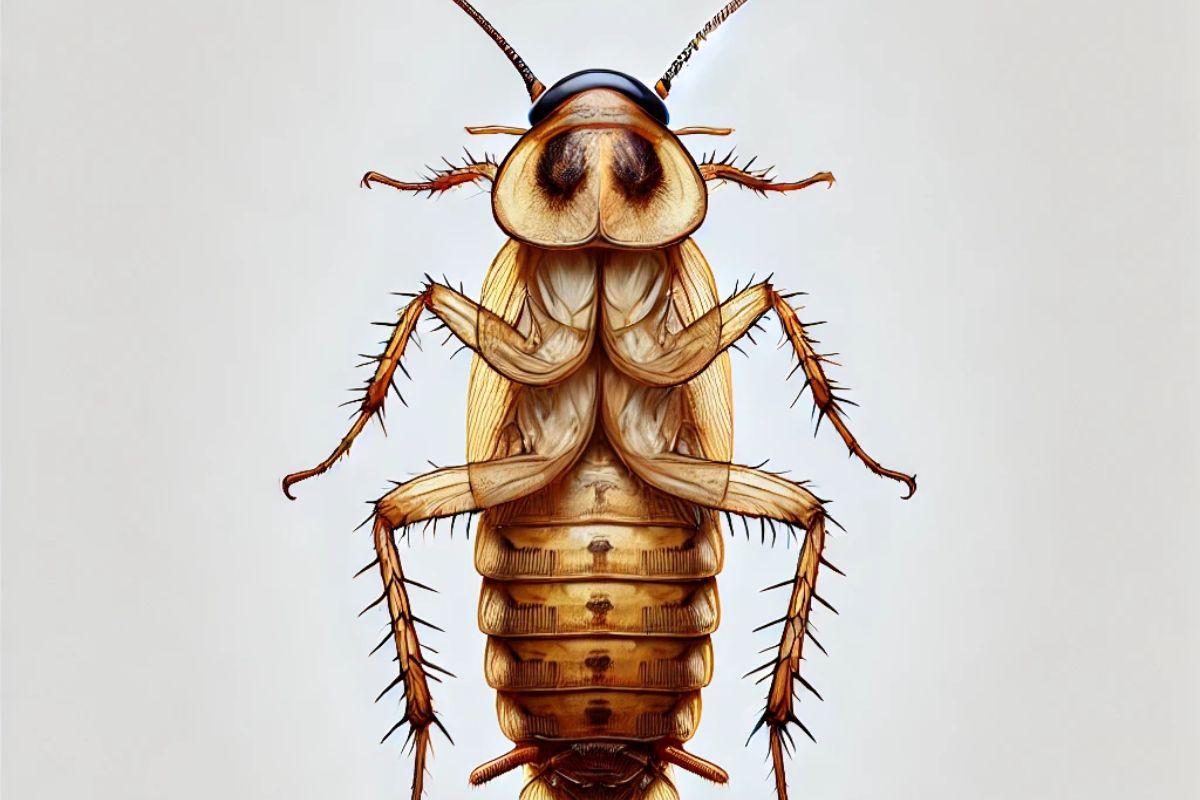
Cockroach nymphs are small, flat, and brown, making them easy to confuse with bed bugs. These young cockroaches are fast movers and tend to avoid light, which makes spotting them even more difficult. They thrive in areas with food and water sources and can infest homes rapidly if left unchecked.
- Where This Bug Can Hide: Behind kitchen cabinets, under sinks, and near garbage disposal areas.
- Health Risks of This Bug: Cockroaches possess harmful bacteria, such as salmonella and E. coli, that can infect food and surfaces, hence causing food poisoning or asthma and allergies.
6. Fleas 
Fleas are small, reddish-brown, jumping insects.They are often mistaken for bed bugs since the bites they give appear identical to those of the former. They infest homes with pets but can also survive for a very long time without an animal host. Their bites cause itching marks similar to those of bed bugs, making differentiation difficult.
- Where This Bug Can Hide: In carpets, pet bedding, sofas, and crevices around the resting spots of pets.
- Health Risks of This Bug:The bug poses health risks through fleas, which transmit typhus and tapeworms to both human beings and animals, besides triggering secondary infections by scratching off.
7. Ticks 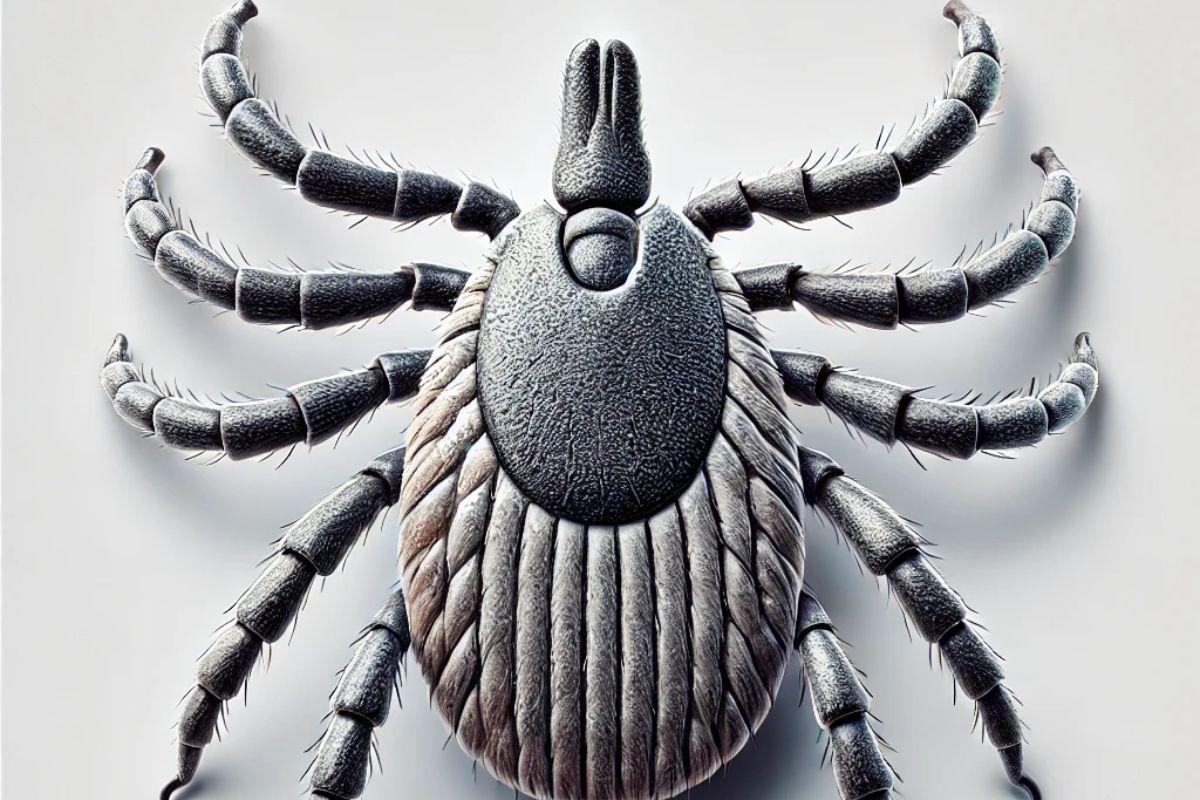
Ticks have oval-shaped bodies that swell after feeding, resembling bed bugs. They latch onto their hosts to feed on blood for hours or even days. Ticks are common in grassy and wooded areas and can be brought indoors by pets or humans who venture outdoors.
- Where This Bug Can Hide: On pets, near outdoor entry points, or in cracks along baseboards.
- Health Risks of This Bug: Ticks are vector agents of serious diseases, including Lyme disease and Rocky Mountain spotted fever, which may cause fever, exhaustion, and serious health conditions without treatment.
8. Swallow Bugs
Swallow bugs are a close relative of the bedbug and almost similar to it. They nest close to bird nests, mostly feeding on birds; however, they can migrate to homes if their hosts do. Like bed bugs, swallow bugs feed on blood and can survive extended periods without feeding.
- Where This Bug can Hide: Near bird nests, attics, or gaps around windows and doors.
- Health Risks of This Bug: The bites cause redness and itching but do not cause any diseases in man. However, their existence brings discomfort and anxiety when in large infestations.
9. Mites
Mites are tiny pests that can look like tiny bed bugs in large quantities. They infest stored grains, household dust, or animal hosts. Even though they are invisible to the naked eye, their bites can cause skin irritation, making them easy to confuse with bedbug infestations.
- Where This Bug Can Hide: On pets, inside stored food, or in dusty furniture and carpets.
- Health Risks This Bug Presents: Mites can cause irritation to the skin, allergic reactions, or respiratory problems in sensitive individuals, and it is an annoyance in households without proper ventilation.
10. Drugstore Beetles 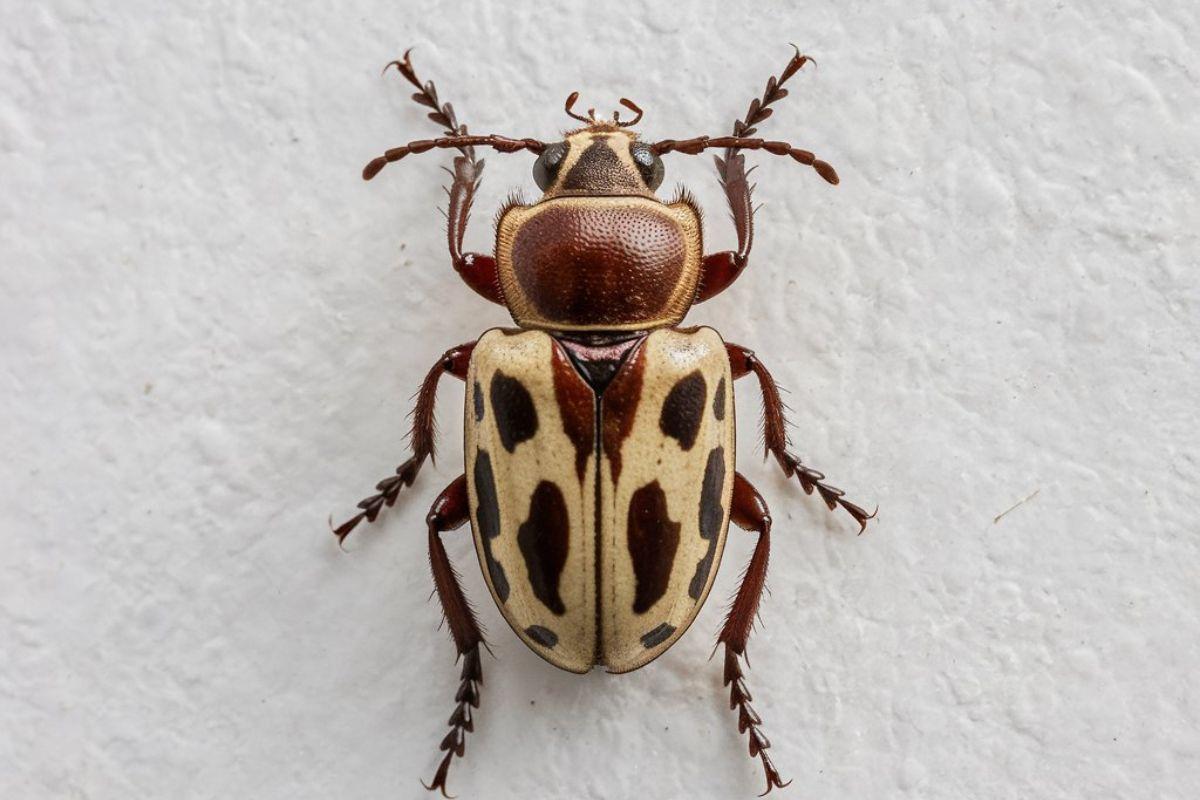
Drugstore beetles are small, reddish-brown insects with round bodies similar to bed bugs. They infest stored food and dry goods, such as grains, cereals, and spices. While they do not feed on blood, their resemblance to bed bugs often causes alarm in kitchens.
- Where This Bug Can Hide: Food packages, kitchen shelves, and pantry cracks.
- Health Risk of This Bug: Drugstore beetles do not bite, but they contaminate food with their droppings; hence the food cannot be consumed. Instead, it becomes a waste.
11.Spider Beetles 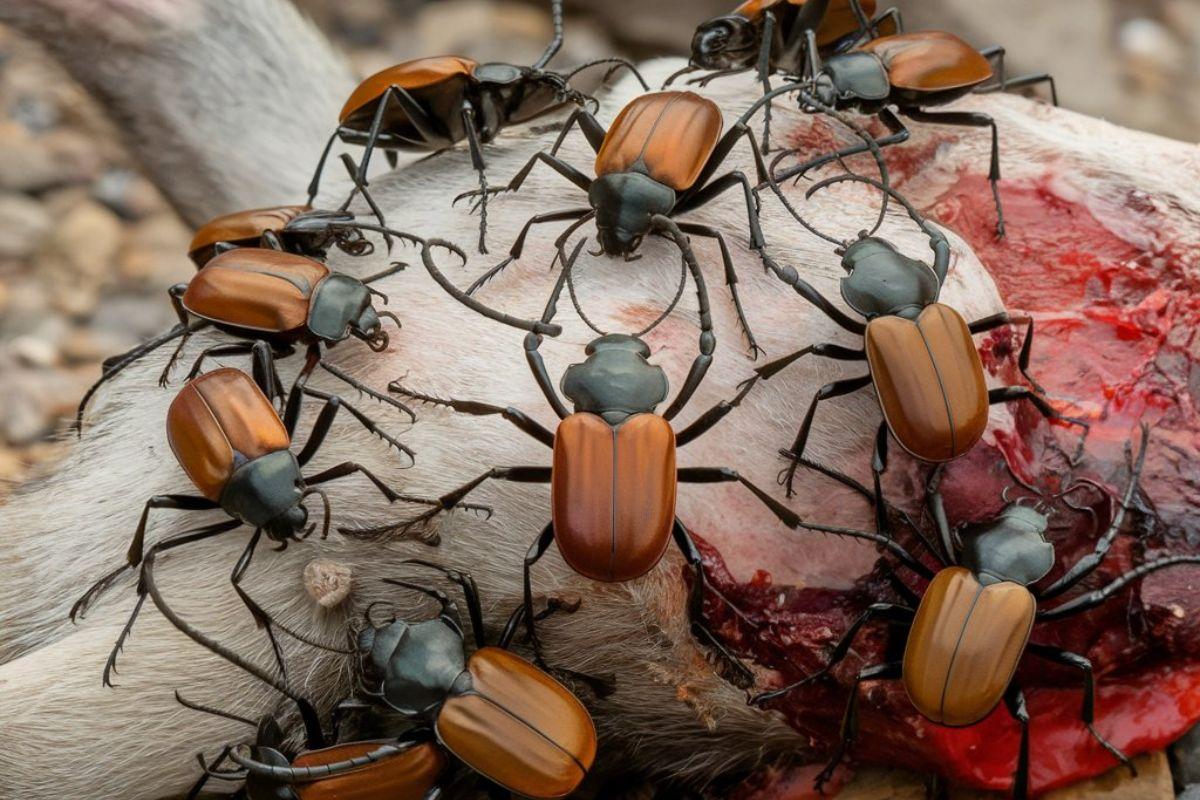
Spider beetles are small, reddish-brown insects with round bodies, and they are often mistaken for bed bugs, especially in dark or dimly lit areas. These pests are scavengers, feeding on organic debris like food crumbs and pantry items. They are nocturnal, so that makes them harder to find.
- Where This Bug May Hide: In dark pantries, behind kitchen appliances, or in food storage containers.
- Health Risks of This Bug:Even though it does not bite humans, spider beetles contaminate the food supplies through their excretion and bacteria, and when ingested, could lead to foodborne illness.
FAQs
What are the bugs that look like bed bugs?
Carpet beetles, bat bugs, and fleas are the common bugs that resemble bed bugs. These bugs have the same shape and size.
How can I identify if I have bed bugs or some other bug?
Check out the key differences in terms of size, color, and behavior. Bed bugs are flat and reddish-brown, while other bugs might appear more rounded or lighter in color.
Do bugs that appear to be bed bugs bite?
Yes, many bugs that resemble bed bugs, including fleas and bat bugs, bite. Their bites may appear different from bites from a bedbug, however.
Can these bugs infest my home?
Yes, many bugs that appear to be bed bugs can infest homes. Proper identification is crucial to avoid infestation in the future.
How do I eliminate bugs that look like bed bugs?
Pest control measures differ depending on the bug type. Professional treatment is recommended for proper identification and effective elimination.
Conclusion
Identifying bugs that look like bed bugs is a way to do proper pest control. Every bug has its features, and misidentification may result in ineffective treatments. Proper identification will lead you to the right step, thus saving time and money.
If the problem is not sure about the bugs, it is best to ask a professional for help. They can identify the pests and recommend the right solution. Professional assistance ensures quick resolution of the problem and keeps your house pest-free.
